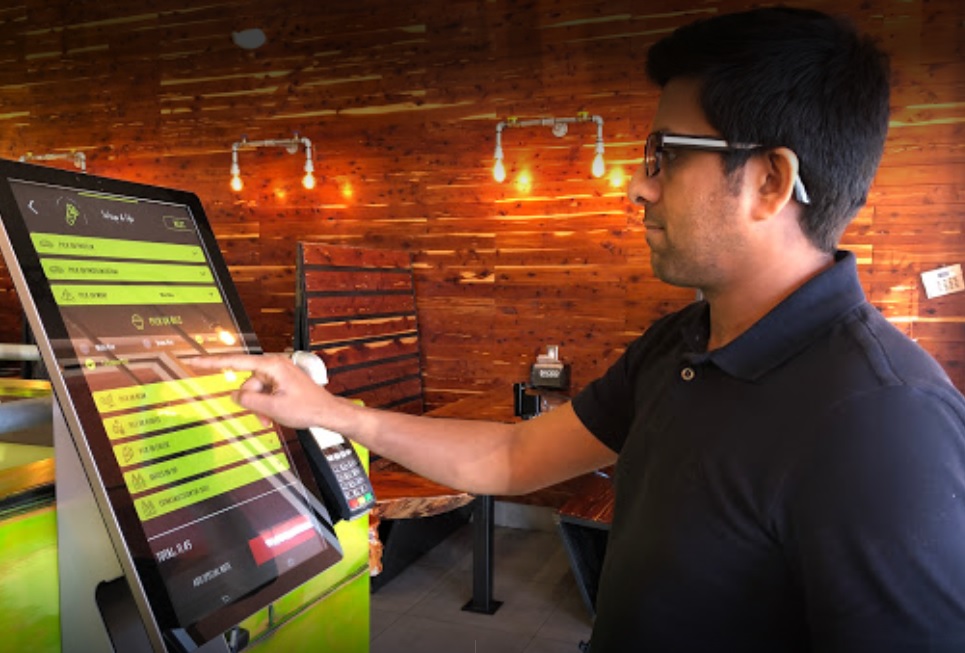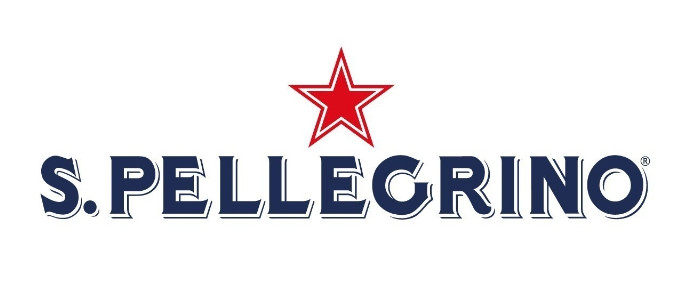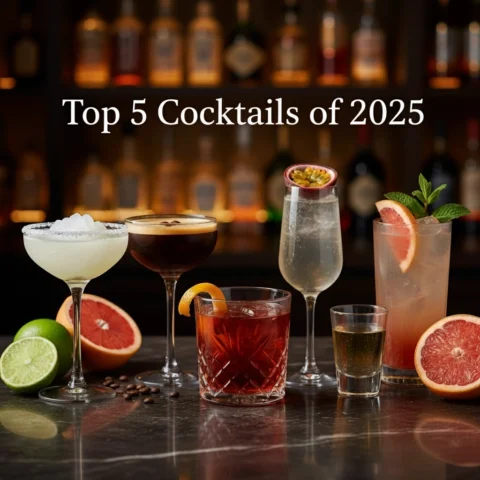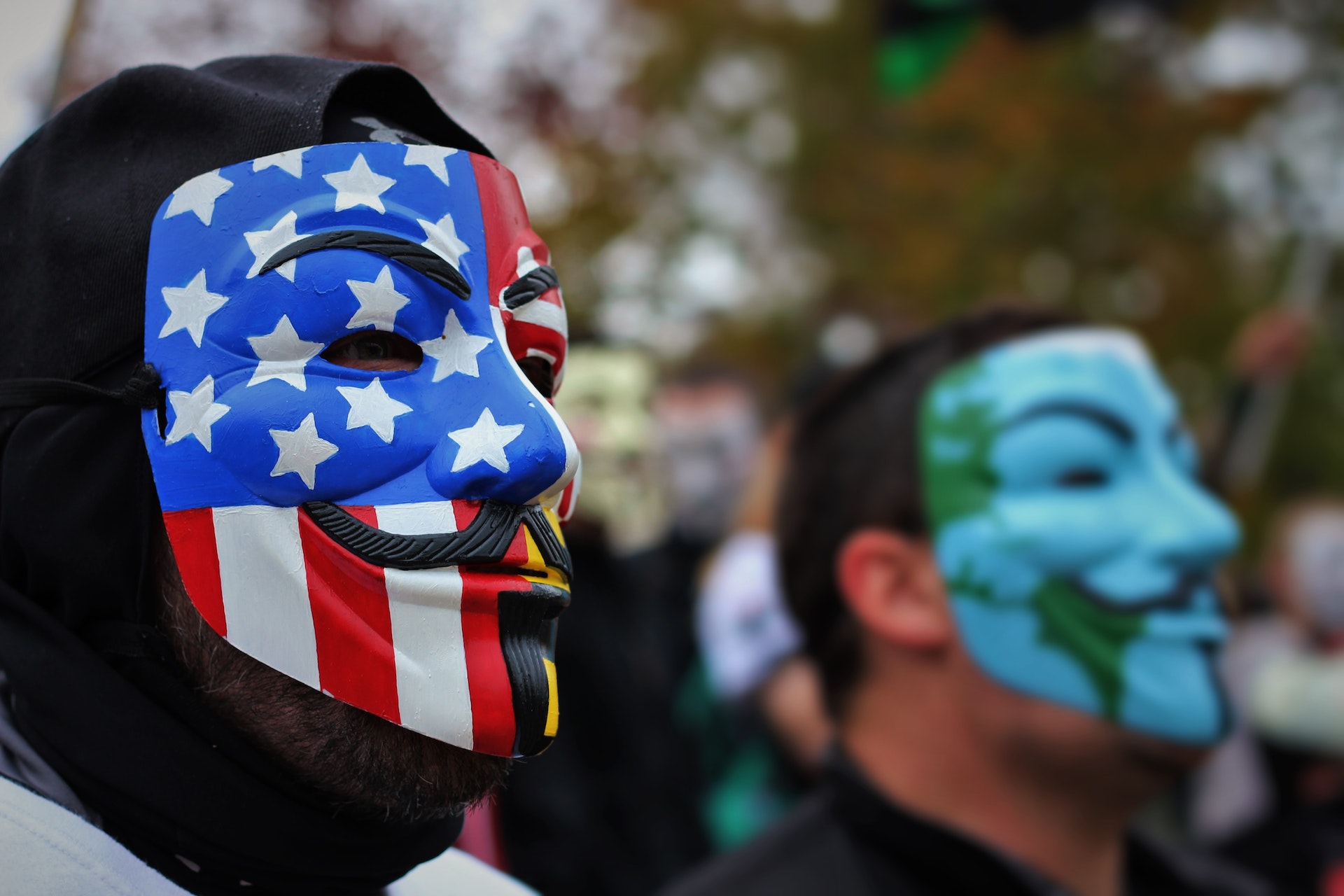When Starbucks first debuted Nitro Cold Brew in its U.S. stores, it wasn’t just launching another coffee; it was staking out territory in an emerging, fast-evolving beverage category. For coffee professionals, operators, and beverage brands everywhere, the story of Nitro Cold Brew is a crash course in launching a product that reshapes consumer habits, navigates operational hurdles, and leverages digital culture—all while creating an experience guests love to talk about.
The Rise of Nitro: Why Starbucks Changed the Cold Brew Game
Before Nitro, cold brew itself was already a disruptor: low-acid, slow-steeped, smooth, and designed for the modern, mobile coffee drinker. But where cold brew delivered clean caffeine, Nitro Cold Brew elevated the ritual into an experience. Infused with nitrogen right at the tap, Nitro Cold Brew pours like a Guinness—cascading, creamy, and crowned with a dense, velvety head. According to Starbucks, the nitrogen infusion enhances the smoothness, gives a natural sweetness, and creates a texture unlike any typical iced coffee.
Industry insiders quickly distinguished cold brew and nitro cold brew as truly separate beverage categories. Panelists at Coffee Fest, for example, insisted the sensory and technical differences between the two meant they “can’t be judged against each other in competition.” This shift wasn’t just semantics—it required a new playbook for everything from staff training and sourcing to marketing and menu design.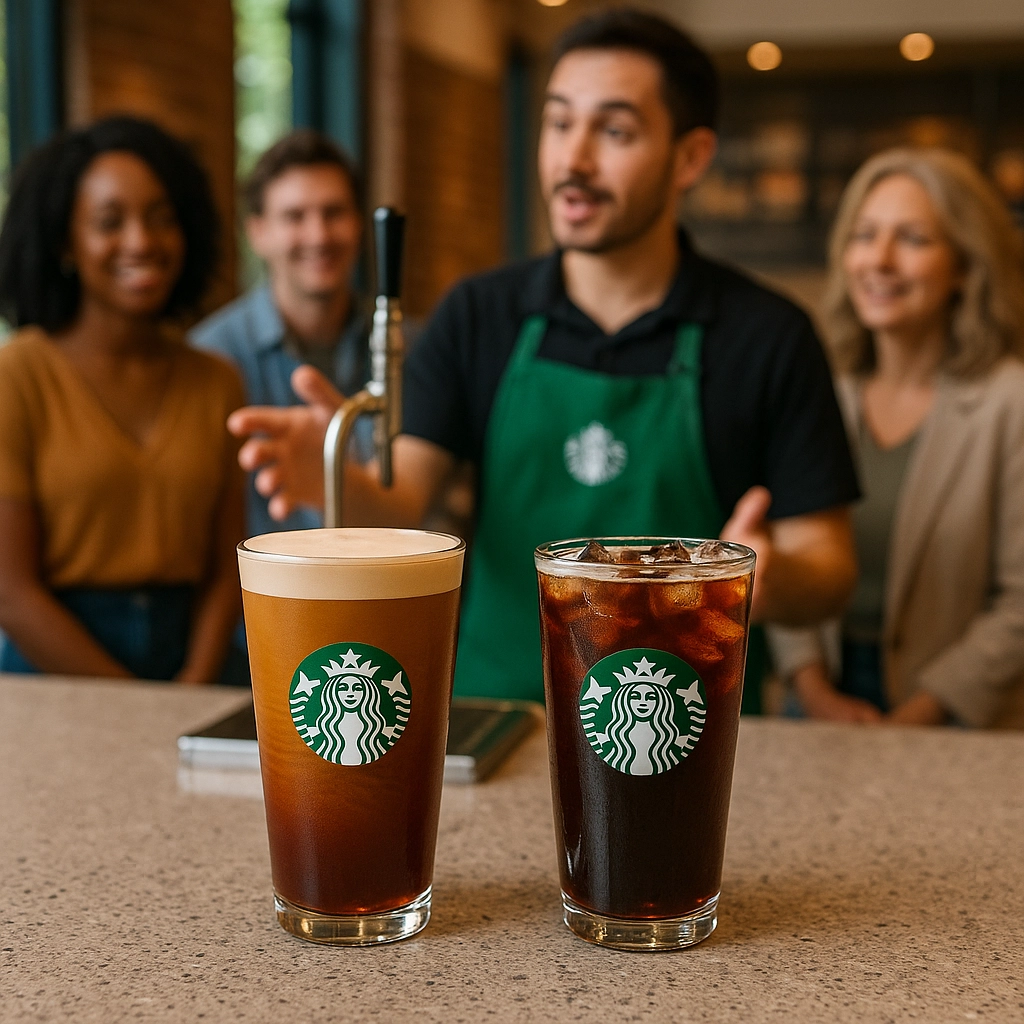
Building Buzz: The “Nitro Cold Brew Challenge” and Social Media Engagement
Starbucks has long excelled at creating drink rituals, from Pumpkin Spice Latte season to secret menu hacks. With the Nitro Cold Brew launch, a new wave of customer-driven content helped drive awareness and intrigue: the “Nitro Cold Brew Challenge.”
It started organically—customers on TikTok and Instagram began sharing taste-test videos comparing regular cold brew and Nitro, often declaring, “CHALLENGE ACCEPTED STARBUCKS.” The movement picked up steam in Spring 2025, with videos tallying millions of views and introducing a new generation of coffee drinkers to the category.
What made this social engagement so powerful? It was authentic, visual, and participatory: watching the nitro cascade, describing the difference in mouthfeel, and, not infrequently, reacting to mix-ups when the “challenge” didn’t go as planned. This playful, viral challenge did more to educate consumers about beverage innovation than any corporate explainer ever could.
“If you get regular cold brew by mistake, you’ll know immediately,” wrote one coffee influencer (coffeeinfluencer.com). “Nitro just hits different—the mouthfeel, the crema, it’s like nothing else in the store.”
Starbucks, agile as always, leaned into the wave by training baristas on how to answer Nitro Cold Brew questions on the fly and by designing in-store prompts inviting guests to “Try the Challenge Yourself.” This tight integration of digital trends with front-line operations is a hallmark of Starbucks’ category dominance.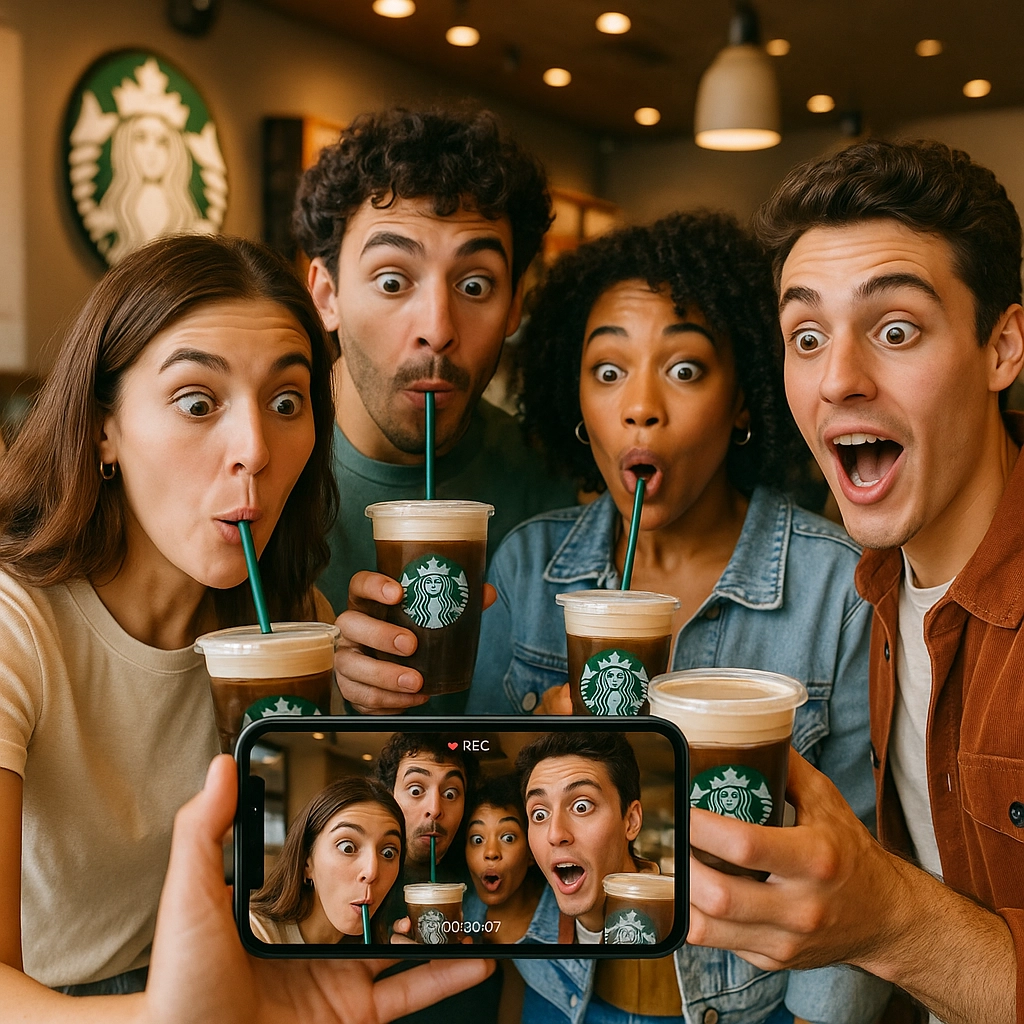
Operational Realities: What It Takes to Introduce a New Beverage Category
Behind the creamy cascade, rolling out Nitro Cold Brew at scale required Starbucks to rethink both equipment and training. While traditional cold brew can be batched, bottled, and poured from urns, nitro requires pressurized kegs, specialized taps, and ongoing system maintenance. For chain operators, this meant investing in new infrastructure and establishing new protocols for safety, quality, and consistency.
Menu engineering also presented a challenge. Consumer studies (see our analysis at fb101.com/soft-drinks-concentrate-market-research) found that nitrogenated beverages often command a premium, but can also create “decision fatigue” if not clearly differentiated on menus. Starbucks addressed this with prominent graphics, dedicated Nitro tap handles, and regular LTOs (Limited Time Offers) that cross-promoted the new brew.
The payoff? As of 2025, more than one in ten U.S. coffee consumers express interest in bottled or canned nitro products—a number that rises to nearly one in five among Millennials and Gen Z. In Starbucks’ flagship locations, Nitro outsells traditional cold brew during afternoon dayparts and commands higher social media engagement than any new coffee beverage since the Flat White.
Lessons for Beverage Innovators: Trends, Pitfalls, & Best Practices
For other operators or brands eyeing the next big beverage category, Starbucks’ Nitro Cold Brew journey offers valuable insights:
- Product education is everything. Distinguish new beverages with clear language and staff engagement. Use physical cues (unique tap handles, glassware, menu icons) and let taste tests do the talking.
- Create social moments. Encourage guests to share, challenge, and compare. Empower staff to join conversations online and in person.
- Operational readiness is non-negotiable. Upgrades for new beverage formats—whether nitrogenation, specialty carbonation, or fermentation—require investment, training, and rigorous QA/QC protocols. Don’t rush.
- Stay tuned in to digital trends. Viral moments can emerge from customer experience “mistakes” as much as planned campaigns. Lean in with agility.
Success stories aren’t limited to Starbucks. Peet’s, Dunkin’, and independent shops like Stumptown (stumptowncoffee.com) have all introduced their own nitro programs—each tailoring the experience to their unique customer base. When done right, nitro has boosted afternoon beverage sales, lengthened dwell time, and driven loyalty among younger guests.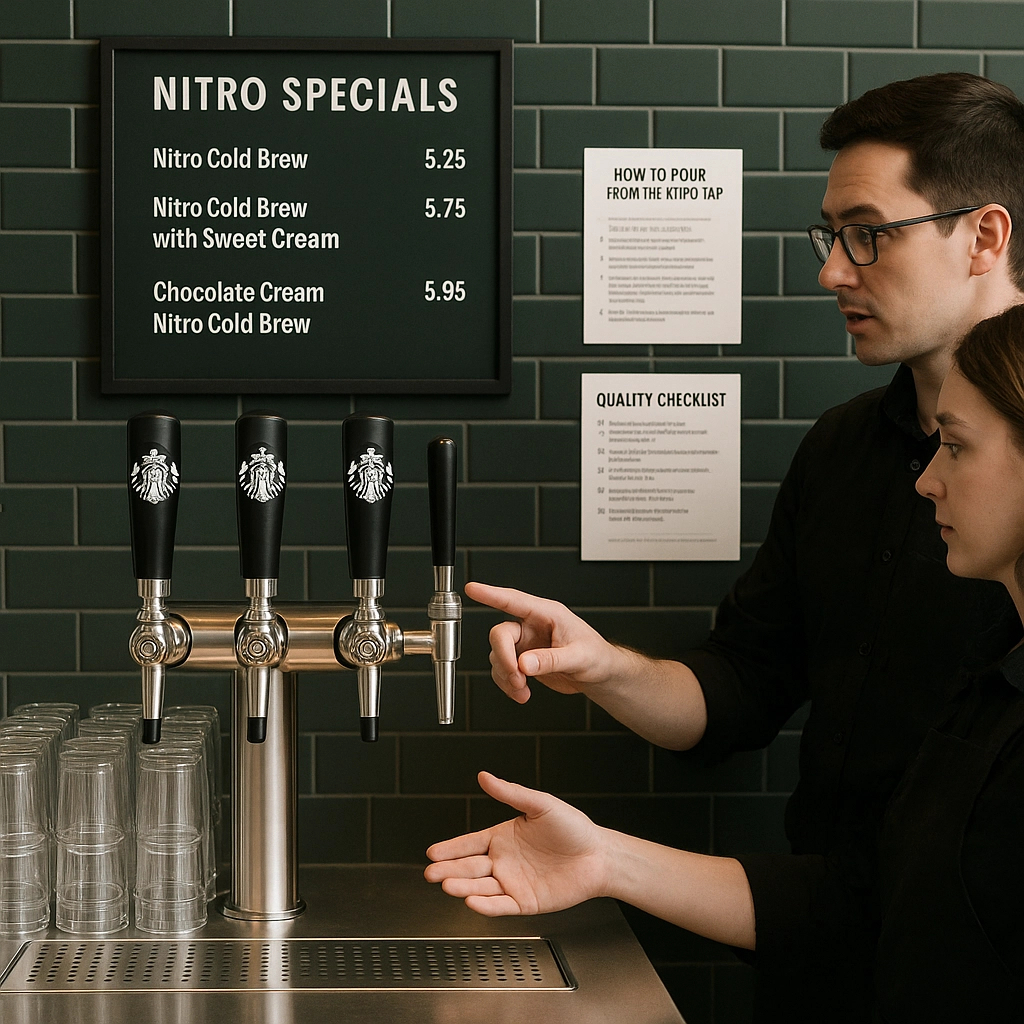
Expanding the Nitro Category: Beyond Coffee
Starbucks’ innovation paved the way for a broader “Nitro Revolution.” Today, you’ll find nitro teas, nitro matcha, and even nitro-infused plant-based beverages entering the market. Brands are experimenting with everything from oat milk bases to botanical infusions, applying the nitrogenation technique for texture, theatricality, and margin alike.
Cold-pressed juice companies and craft breweries have also gotten in on the act, debuting nitro versions of lemonades and kombuchas. At the recent World of Coffee expo, beverage analyst Tara Williams (beveragefuturetrends.com) noted, “What Starbucks did with Nitro Cold Brew is now being repeated across functional beverages. Texture and visual presentation are as important as flavor in the new era.”
Marketing Takeaways: Turning a Product into a Category
Starbucks’ Nitro Cold Brew wasn’t just a new menu item. It was a successful gamble on redefining what “coffee” could be: textural, indulgent, Instagrammable, and health-conscious all at once (at just five calories with 0g sugar, it earns diet-friendly bragging rights).
The biggest lesson for F&B professionals? To succeed at category creation, you need more than a hero SKU. You need:
- A compelling story and a distinct visual ritual
- Digital engagement to fuel organic discovery
- Education at every touchpoint: staff, signage, and digital content
- Consistent delivery across channels, from in-store to RTD and online
As consumer expectations for novelty, health, and experience keep rising, those who combine operational excellence with shareable moments and category vision—like Starbucks did here—will own the future of the beverage business.
Ready to innovate your own beverage program or want to learn more? Dive deeper into trends and strategies at Food & Beverage Magazine. Check out our latest features on plant-based beverage leaders and success stories from top general managers.
Have you introduced a new beverage category at your operation? Share your story in the comments below or tag us on social media to keep the conversation going!
Written by Michael Politz, Author of Guide to Restaurant Success: The Proven Process for Starting Any Restaurant Business From Scratch to Success (ISBN: 978-1-119-66896-1), Founder of Food & Beverage Magazine, the leading online magazine and resource in the industry. Designer of the Bluetooth logo and recognized in Entrepreneur Magazine's “Top 40 Under 40” for founding American Wholesale Floral. Politz is also the founder of the Proof Awards and the CPG Awards and a partner in numerous consumer brands across the food and beverage sector.




